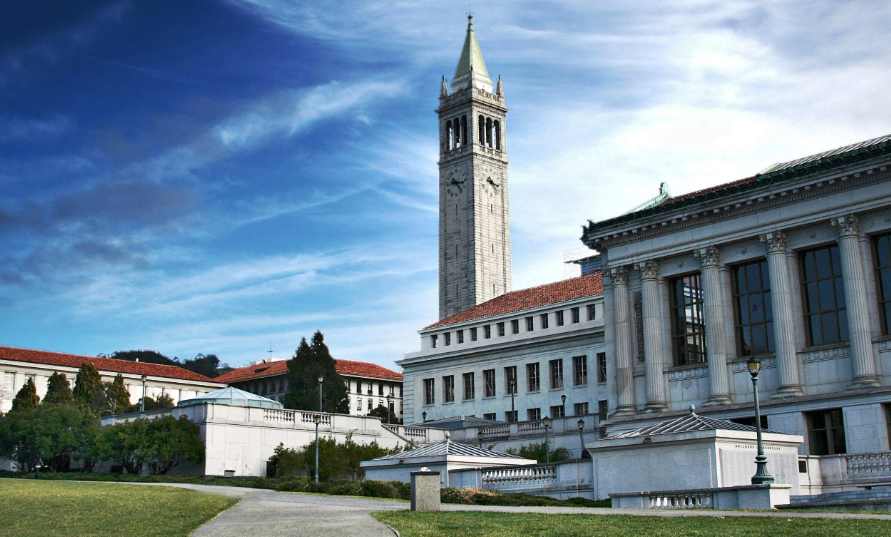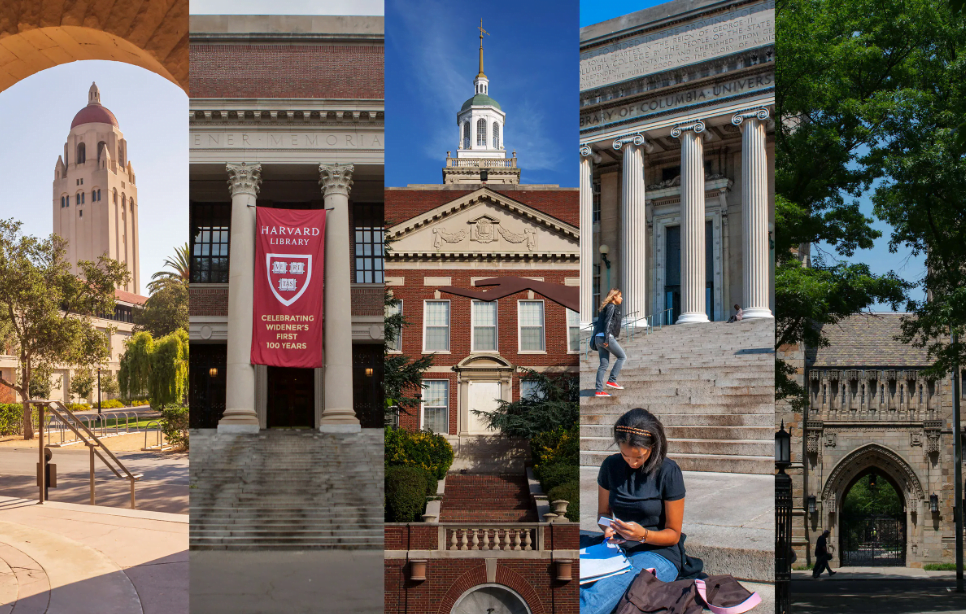Wall Street Journal College Rankings, The Wall Street Journal (WSJ) is a well-known and respected publication that has been providing news, analysis, and opinion on a wide range of topics for over a century. In recent years, the WSJ has also become a prominent voice in the world of college rankings, offering a unique perspective on the best colleges and universities in the United States.
Table of Contents
Wall Street Journal College Rankings
The WSJ’s college rankings are based on a comprehensive evaluation of over 1,000 colleges and universities, taking into account a variety of factors that are deemed important for students and their future success. Unlike many other college rankings, which often focus solely on measures such as academic reputation or endowment size, the WSJ’s rankings take into account a wide range of factors, including the earning potential of graduates, the level of student debt, and the cost of attendance.
One of the key strengths of the WSJ’s college rankings is the use of data from a variety of sources. This allows the publication to provide a more accurate and comprehensive picture of the colleges and universities being ranked. For example, the WSJ uses data from the Department of Education, the College Scorecard, and the Social Security Administration, among others, to create a well-rounded view of each institution.
Another unique aspect of the WSJ’s college rankings is the emphasis on the economic value of a college education. The publication takes into account the median earnings of graduates from each college, and how long it takes for them to pay off their student loans. This helps to provide students and their families with a more realistic picture of the financial return on investment from a college education, and helps to identify institutions that offer the best value for their money.
The WSJ’s college rankings are also notable for their focus on student outcomes, rather than inputs such as admission criteria or faculty credentials. This means that the rankings give more weight to factors such as job placement rates and graduates’ success in the workforce, rather than measures such as the size of the endowment or the number of Nobel Prize winners on the faculty. This makes the WSJ’s rankings particularly useful for students who are looking for a college that will help them achieve their career goals and provide a strong return on investment.
Another important aspect of the WSJ’s college rankings is the recognition of colleges and universities that offer a strong commitment to diversity and inclusion. The publication takes into account the racial, ethnic, and socioeconomic diversity of the student body, as well as the level of support provided to students from underrepresented groups. This helps to identify institutions that are truly committed to providing a welcoming and inclusive environment for all students.
The full list of WSJ’s 2024 Best Colleges in the U.S. are shown in the table below. The full list is available here.
| Rank | School | State | Score | Type |
| 1 | Princeton | NJ | 91.6 | Private |
| 2 | MIT | MA | 90.4 | Private |
| 3 | Yale | CT | 90.3 | Private |
| 4 | Stanford | CA | 90.1 | Private |
| 5 | Columbia | NY | 89.7 | Private |
| 6 | Harvard | MA | 89.5 | Private |
| 7 | University of Pennsylvania | PA | 89.4 | Private |
| 8 | Amherst College | MA | 88.4 | Private |
| 9 | Claremont McKenna College | CA | 88 | Private |
| 10 | Babson College | MA | 87.9 | Private |
| 11 | Swarthmore College | PA | 85.9 | Private |
| 12 | Georgetown University | DC | 84.6 | Private |
| 13 | Vanderbilt | TN | 84.3 | Private |
| 14 | Lehigh University | PA | 84.3 | Private |
| 15 | University of Florida | FL | 84.2 | Public |
| 16 | Duke University | NC | 84.1 | Private |
| 17 | Rose-Hulman Institute of Technology | IN | 84 | Private |
| 18 | California Institute of Technology | CA | 83.8 | Private |
| 19 | New Jersey Institute of Technology | NJ | 83.5 | Public |
| 20 | Brigham Young University | UT | 83.4 | Private |
| 21 | Dartmouth College | NH | 83.4 | Private |
| 22 | University of Southern California | CA | 83.4 | Private |
| 23 | Illinois Institute of Technology | IL | 83.3 | Private |
| 24 | Cornell University | NY | 82.7 | Private |
| 25 | Northwestern University | IL | 82.6 | Private |
| 26 | Washington University in St. Louis | MO | 82.1 | Private |
| 27 | Lake Forest College | IL | 81.9 | Private |
| 28 | University of Michigan – Ann Arbor | MI | 81.6 | Public |
| 29 | Florida International University | FL | 81.3 | Public |
| 30 | Davidson College | NC | 81.2 | Private |
| 31 | Williams College | MA | 81.2 | Private |
| 32 | University of Notre Dame | IN | 81.1 | Private |
| 33 | University of La Verne | CA | 80.9 | Private |
| 34 | Rensselaer Polytechnic Institute | NY | 80.4 | Private |
| 35 | University of Illinois Urbana – Champaign | IL | 80.3 | Public |
| 36 | Stevens Institute of Technology | NJ | 80.1 | Private |
| 37 | The University of Chicago | IL | 80 | Private |
| 38 | Texas A & M University – College Station | TX | 79.9 | Public |
| 39 | Georgia Institute of Technology – Main Campus | GA | 79.7 | Public |
| 40 | Colgate University | NY | 79.6 | Private |
| 41 | Haverford College | PA | 79.4 | Private |
| 42 | Emory University | GA | 79.4 | Private |
| 43 | The University of Utah | UT | 79.3 | Public |
| 44 | Washington & Lee University | VA | 79.2 | Private |
| 45 | Boston College | MA | 79.2 | Private |
| 46 | University of Connecticut | CT | 79.2 | Public |
| 47 | Baruch College | NY | 79.2 | Public |
| 48 | Thomas Jefferson University | PA | 78.9 | Private |
| 49 | Pomona College | CA | 78.8 | Private |
| 50 | Colby College | ME | 78.7 | Private |
It is also worth mentioning that the WSJ’s college rankings are updated annually, allowing students and their families to see how colleges and universities are performing over time and make informed decisions about where to attend. Additionally, the publication provides detailed information and analysis on each institution, including a profile of the campus and the surrounding community, as well as a list of notable alumni and programs of distinction.
Wall Street Journal/Times Higher Education College Rankings

The Wall Street Journal/Times Higher Education (WSJ/THE) College Rankings is an annual ranking of colleges and universities in the United States. The rankings are based on 15 performance indicators, which are grouped into four categories:
- Outcomes: This category measures things like the salary graduates earn and the debt burden they accrue.
- Resources: This category measures the amount of money schools spend on instruction and student services.
- Engagement: This category measures students’ views on things like teaching and interactions with faculty and other students.
- Environment: This category measures the diversity and inclusivity of the campus community.
The 2023 WSJ/THE College Rankings are led by Harvard University, which has topped the rankings for the fifth year in a row. Stanford University is ranked second, followed by the Massachusetts Institute of Technology (MIT) and Yale University. The University of Michigan-Ann Arbor is the top public university, ranked 11th overall.
Here are the top 10 universities in the 2023 WSJ/THE College Rankings:
- Harvard University
- Stanford University
- Massachusetts Institute of Technology (MIT)
- Yale University
- Princeton University
- Columbia University
- University of Chicago
- Duke University
- Johns Hopkins University (tie)
- University of Pennsylvania (tie)
- University of Michigan-Ann Arbor
You can find the full rankings on the WSJ/THE website.
Here are some of the factors that contribute to a university’s ranking in the WSJ/THE College Rankings:
- Graduation rate: The percentage of students who graduate within six years.
- Mid-career salary: The average salary of graduates 10 years after graduation.
- Debt burden: The average amount of student loan debt graduates have after graduating.
- Per-student spending: The amount of money schools spend on instruction and student services per student.
- Faculty resources: The number of full-time faculty members and the average amount of research funding they receive.
- Student engagement: The results of a student survey on things like teaching, interactions with faculty and other students, and campus life.
- Diversity: The racial, ethnic, and socioeconomic diversity of the student body.
- Inclusiveness: The extent to which all students feel welcome and supported on campus.
The WSJ/THE College Rankings are a useful tool for students and their families who are considering college. However, it is important to remember that no single ranking can capture the full value of a college education. Ultimately, the best way to choose a college is to visit different schools and get a feel for the campus and the people.
In conclusion, the Wall Street Journal’s college rankings provide a unique and valuable perspective on the best colleges and universities in the United States. By focusing on student outcomes and the economic value of a college education, and by using data from a variety of sources, the WSJ’s rankings help students and their families to make informed decisions about where to attend. Whether you are a prospective student looking for a college that will provide you with a strong return on investment, or a family looking for a college that offers a supportive and inclusive environment, the WSJ’s college rankings are an excellent resource to help you make the right choice.


You may like it
10 highest paying jobs in pharmaceutical industry
The 10 Best Colleges for Data Science 2024-2025
Dr. Seuss Ethnicity … 6 Things You May Not Know About Him
5 Benefits of Getting Associate’s Degree Before Bachelors
best paying jobs in major chemicals
Top Ten Colleges Michigan … You Need to Know About